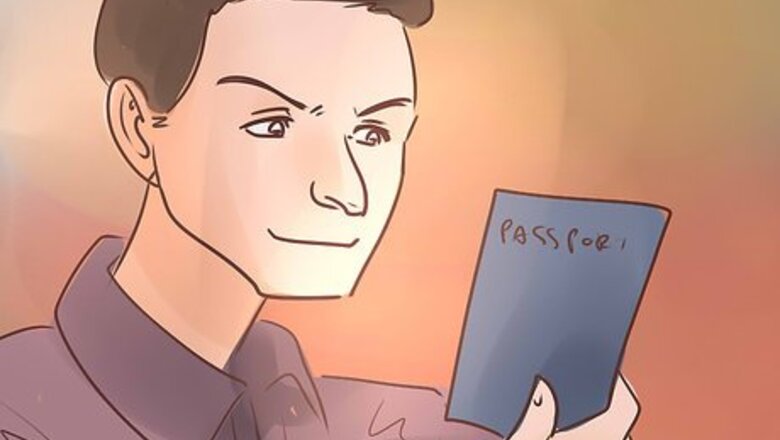
views
Arranging Your Trip
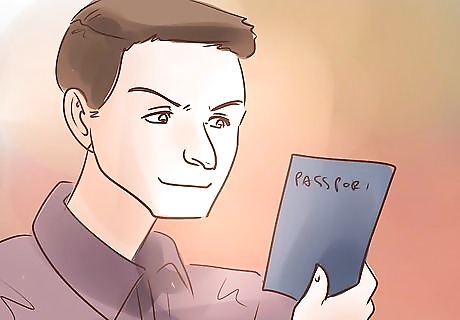
Organize your travel papers. If you’re entering the Czechia from another country, you’ll need to make sure your passport is valid and up to date. It may also be a good idea to invest in travel insurance, since you’ll be a long way from home for an extended period. These details are vital for a safe and successful trip, so get them sorted within plenty of time to spare before your departure. Czechia enjoys a celebrated place in the European Union, making it a convenient, frustration-free destination for local and international travelers alike. Check to see what the laws and restrictions are for traveling to Czechia from your country.
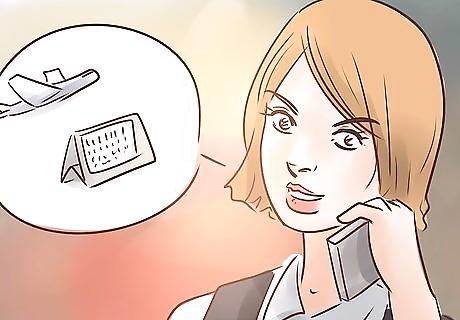
Book a flight. It will be necessary for most travelers to fly into Prague. Plan a time that fits your schedule, then decide how long your trip will be and book your flight well in advance. That way, you’ll have plenty of time to make new arrangements should the details of your flight change or you get notice of a cancellation. Though it’s a popular destination for tourists all-year round, Prague tends to be least busy in the spring and early autumn, from around March—May or September—November. Score deals on airfare by visiting during quieter seasons.

Pick out accommodation that works for you. You'll have numerous accommodation options available to you throughout the various sections; from luxury resorts and hotels to hostels and bed and breakfasts. Look into places to stay near the areas where you plan on spending most of your time. The city is laid out in a way that makes it easy to get to most places on foot. If money isn't an object, consider staying in one of the city's more historic sites, such as the Hotel Cerna Liska or Chateau Mcely. For less expensive lodging, reserve a room in a popular international hotel chain in the heart of the New Town. As with airfare, the price of your stay will depend on when you visit. Keep an eye out for special offers in the months leading up to your trip.
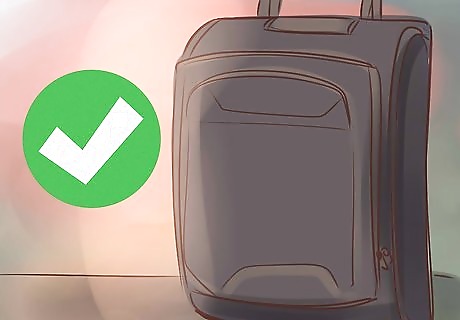
Pack appropriately. Bring enough clothing and other necessities to last the length of your stay. Depending on the time of year that you go, it may be wise to bring along some warmer garments; such as an insulated jacket, scarf and gloves, as Prague can get pretty cold during the winter. Be sure to pack at least one pair of comfortable shoes, as you’ll likely be travelling on foot most of the time. The summer months in Prague are usually very sunny, with temperatures that can reach 24°, but nights can get chilly. Average annual precipitation is about 20 inches (51 cm) (500mm). Bring an umbrella for the rainy seasons around early spring and late autumn. Most buildings in Czechia are outfitted with standard European 220V outlets, so bring a new charger or adapter if you’re arriving from somewhere that uses a different type of socket.
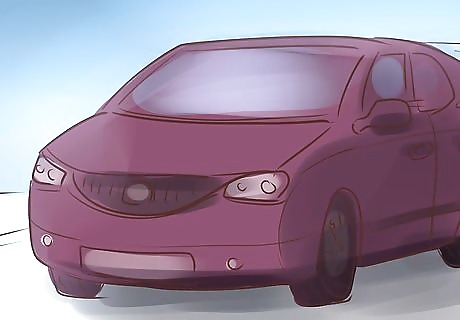
Make the journey by car. Those who are travelling from elsewhere in Central Europe may be able to drive into Prague and find parking for the duration of their stay. It is possible to enter Prague via Germany, Austria and Slovakia using major motorways and rural routes. Since Czechia is a member of the European Union, no special credentials are needed to pass through the border when coming from other countries in the EU. In order to enter Czechia by car through Central or Western Europe, you’ll need a standard adult driving licence, as well as a special sticker that permits you to drive on designated motorways. Borders are open in the EU, but there may be one or more toll roads along the way where drivers have to pay a small fee.
Sightseeing Around the City
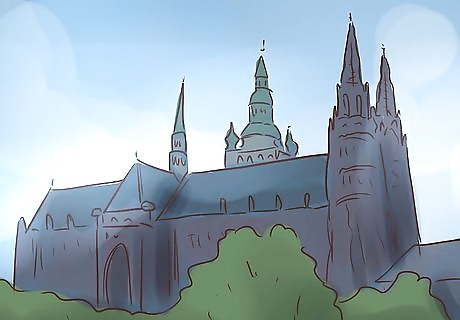
Visit Prague Castle. The city of Prague is home to one of the oldest and largest castle expanses in the world. Prague Castle was built in 880 and over its thousand-year history has housed monarchs, political ambassadors and religious officials. With its towering spires, stunning medieval architecture and beautifully maintained courtyards, Prague Castle is on the must-see list for first-time visitors to the country. Walking tours of the castle are led at specific times and require tickets for admission, which you can buy. If you only have time to stop at one tourist spot during your time in Prague, Prague Castle should be it.
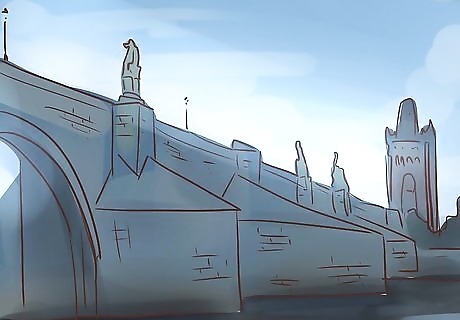
See Charles Bridge. Charles Bridge spans the Vltava river and links the Old Town and Lesser Town, two of Prague’s most antiquated districts. Named in honor of the Czech king and Holy Roman Emperor Charles IV, the 1,700 foot footbridge is paved with thousands of time-worn cobblestones and lined with Baroque statues of European saints, martyrs and heroes. Crossing it brings you right to the bottom of Prague Castle, and provides many breathtaking photo opportunities along the way. Charles Bridge has undergone several restorations throughout its existence, making it an architectural marvel that stretches back centuries. The bridge acts as a sort of nexus that connects the different individual districts (Old Town, Lesser Town and New Town) of the city.
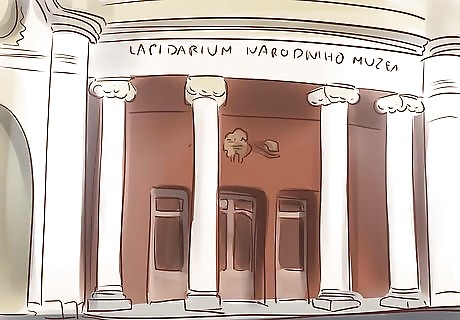
Tour one of the many museums. As one of Central Europe’s oldest and most storied cities, Prague is a treasure trove of art and antiquity. You can catch a glimpse of Czechia visual history by visiting the National Museum, City of Prague Museum or Lapidarium. In their exhibits; you will find statues, paintings, precious jewels and relics from times long past. In addition to museums, you’ll also be free to take your pick of quite a few different historical reserves and art institutes, like the Leica Gallery, the Czech Museum of Cubism and Lobkowitz Palace.
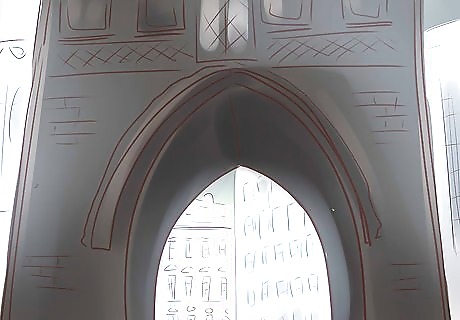
Take a stroll through the Old Town. Prague’s Old Town district was originally a medieval settlement that lay beside the Charles Bridge opposite Prague Castle. Though it has been renovated since it was built, it’s still possible to see landmarks like the Old New Synagogue and the Astronomical Clock and walk along the original cobblestones that cover the winding streets. This is where Prague’s medieval roots are most strongly preserved. You can wander the streets of Prague for hours and constantly be wowed by its classical charm and nearly endless sights. Stop for a snack or a refreshing cup of coffee along the way, or browse collections of beautiful handmade crafts sold by street vendors.
Enjoying the Local Culture

Spend a day shopping in New Town. New Town is the youngest individual district in Prague and has grown up into a commercial hub in recent years. On both sides of its busy streets are department stores, boutiques, cafes, banks and movie theaters offering high quality wares and a break from the looming Bohemian atmosphere of the rest of the city. If you’re looking to pick up some one-of-a-kind souvenirs to bring home, New Town is the place to do it. You’ll be able to find all manner of living supplies and modern amenities in the newer sections of Prague, which means you can pack light and still have everything you need. New Town makes a great place to unwind and have dinner or drinks after a day of learning about the city’s fascinating history.
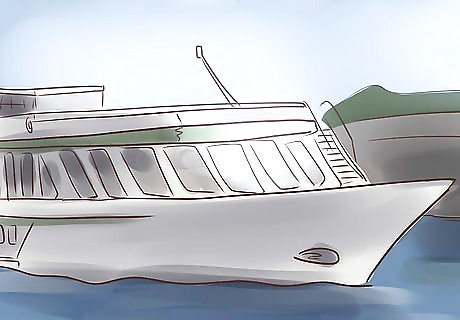
Sign up for a river cruise. One fun alternative to seeing historic Prague on foot is to do it from the water. Rather than shuffling up and down crowded walkways, you can kick back and relax as a luxury riverboat carries you down the Vltava river and grants you a unique view of some of the finest vistas in the city. You’ll pass by Prague Castle, Charles Bridge and see the historic monuments of Wenceslas Square on your way to the river’s quieter outstretches. Riverboat tours typically last between 1–3 hours, and sometimes include dinner. This is a great way to get off your feet and avoid the big groups of tourists you’ll typically find packed into the streets.
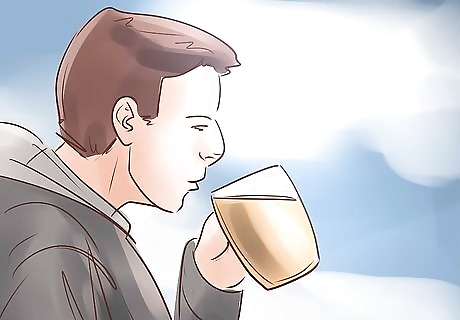
Enjoy good food and beverages. There is a wealth of hearty, delightful cuisine to be found in Central Europe that draws from Slavic, Germanic and West Asian traditions. Prague itself bears the distinction of having several Michelin star rated restaurants within its limits for lovers of fine dining. You also have the option of settling into any number of cozy bistros that offer delicious meals, stout beer and genial service within walking distance of your accommodations. Some traditional Czech dishes that are worth trying include guláš, stewed meat with hearty gravy and bread dumplings, smažený sýr, a deep-fried block of cheese, and palačinky, crepe-like pancakes filled with chocolate, fruit preserves and nuts. Beer is a specialty of Central Europe, with dozens of varieties brewed the old-fashioned way.
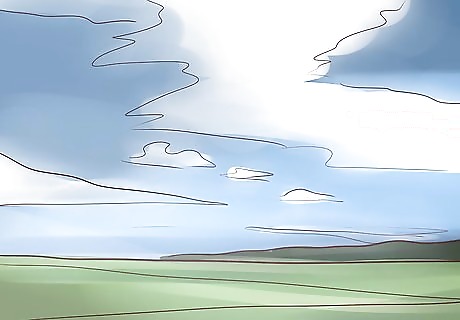
Slow things down with a trip to the countryside. Whether it’s your last stop before leaving the city or you’ve come for a simpler kind of getaway, there’s magic to be found in Prague’s rural outskirts. You’ll be able to bask in the quiet solitude of the countryside surrounded by hundreds of miles of shrouded forest, take a dip in a scenic man-made lake or walk through the silent halls of ancient monasteries and smaller castles. Along with its well-preserved urban centers, Prague’s natural beauty makes it one of Europe’s most prized gems. Prague is a backpacker’s delight. Most destinations are reachable on foot or are just a short train ride away, and the suburbs and country are dotted with affordable hostels to stay the night in. In the summertime, the hillsides of Prague come alive with colorful blankets of wildflowers.














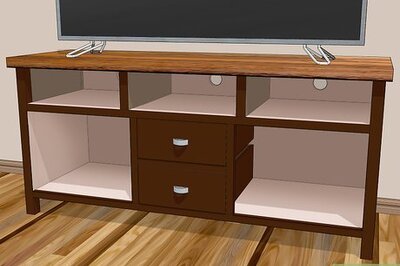



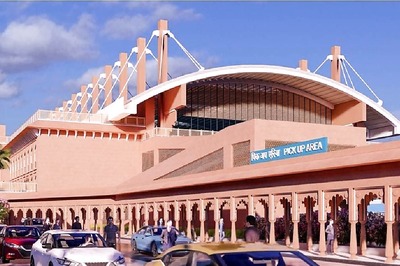
Comments
0 comment